Foresters who have spent most of the working career in the bush will have numerous stories about encounters with our native fauna. The most dramatic and scary usually involve snakes. Despite spending a lot of time walking in the bush, I still have a fear of snakes. If I see one early in the morning, I can be edgy for the rest of the day, particularly if it is a close encounter. In this blog, I would like to share some of my scary fauna experiences.
The first two experiences do not involve snakes and occurred while working on Fraser Island. As a school and university student in the early to mid-1980s, I had the good fortune to work on Fraser Island, as my hometown was nearby Maryborough in Queensland. In February 1986, I was on the island again, this time for two weeks working in a gang of four doing regeneration surveys in the Brushbox (Lophostemon confertus) and Satinay (Syncarpia hillii) forests. We had to survey straight lines 200 metres long and 500 metres apart on pre-determined transects. The foreman led, cutting the transect with a machete, compass and hip chain. Another two followed up to ten metres either side, measuring and naming the trees. The last person recorded the measurements. Apart from the foreman, the rest of us took turns at measuring and recording.
The first incident involved jumping ants or, as Tasmanians call them, jack jumpers (Myrmecia pilosula). I was taking a turn with the clipboard recording the distance and writing down the measurements. At one point, and without knowing, I stood still on a jumper nest. Within a minute, I suddenly had these pricks of shooting pain everywhere on both legs. I immediately dropped the clipboard and pen and howled in pain. I then tried to frantically undo my belt and button to remove my pants with my boots still on. Here I was in the middle of the forest, my pants around my ankles, clumsily hopping around to remove these vicious ants while the other three were in fits of laughter. I don’t know if a swarm of jumping ants has ever bitten you, and if they have, you would appreciate the level of panic and stress I went through. They are relentless, and once they get up your legs, there are sensitive areas that need protection.[1]
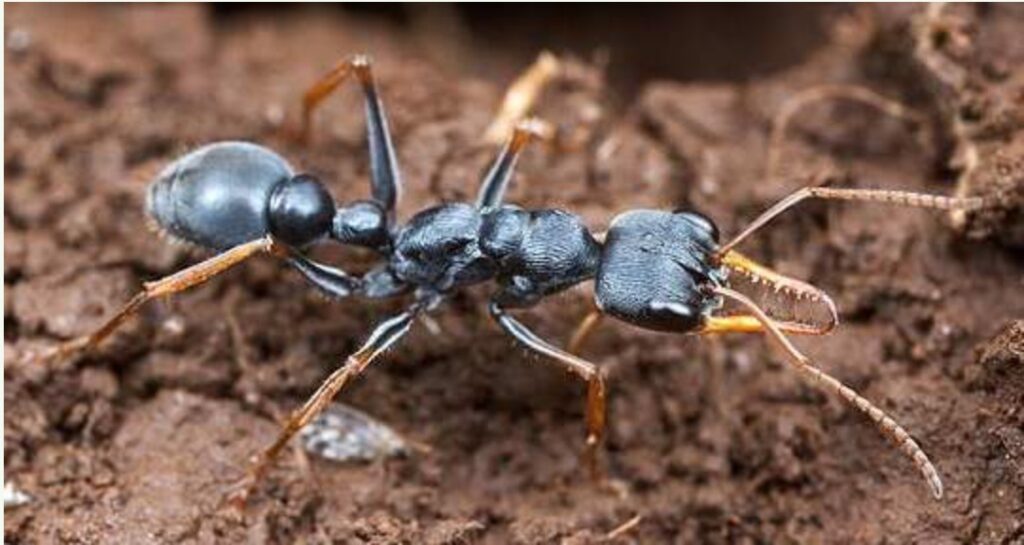
The other Fraser Island incident occurred while I was measuring the diameter of the trees. It was more challenging work than recording, as you had to find a way through the dense understorey to get to the next trees. It was easy to lag behind if there were many trees to measure. One morning I came across a large fallen tree on the forest floor which provided easy access going forward. In hindsight, I realise it was an excellent pathway for small birds and bats to fly through the forest’s understorey. It was also a great place to set up a spider web to catch these birds, bats and insects. As I merrily walked along this fallen tree, content in the fact that I had an easy path to my next series of trees to measure, I happened to look up ahead and walk straight into a sticky spider web with its resident host at eye height. I could feel giant legs crawling on my face. I screamed, loudly, and thrashed about to remove the spider and web from my head. The spider’s body was as big as the full palm on my hand, and it had massive, long legs. I have never been so terrified in my life. I had never seen or imagined a spider so large.[2] My fellow workers enjoyed another scary faunal encounter at my expense.
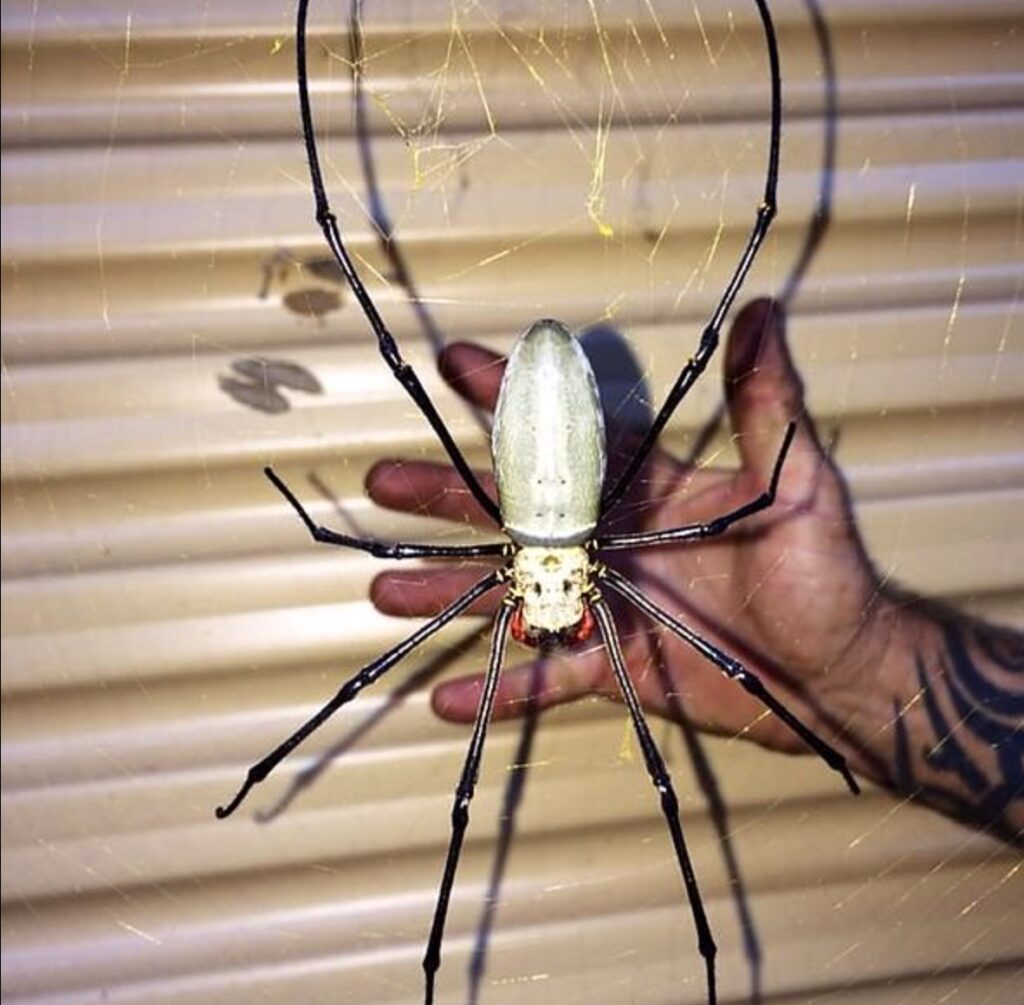
My first full-time forester job was managing the pine plantations around Orange, in New South Wales. Like most areas west of the Great Dividing Range, the district supported lots of king browns or mulga snakes (Pseudechis australis). They loved grass paddocks with water nearby. They can grow up to four metres in length. I recall driving on a fire break and came across one lying in the sun. It occupied the full width of the track.[3] I told my passenger to wind up the window because they were known to wrap around the wheel when you drive over them and then fly in through the open window – I never saw anyone wind up a window so fast.[4]
One of my jobs was to control the blackberry bushes in young pine plantations that were planted on degraded pasture country. Even though we carried out a blackberry spraying program before planting, we realised we were just controlling the tip of the iceberg. Once the land was cultivated and fertiliser added, we simply encouraged the blackberry growth from the buried seed stock. I researched alternative options and spoke to the chemical companies. It was suggested I trial Velpar in a neat application at the base of the blackberry bushes using wands. Field workers had to walk through the grass up to their hips along planting rows to each blackberry bush in summer when snakes are most active. They encountered many king browns, and I was not popular. As it turned out my trial was a complete failure. I didn’t realise there was an impermeable rock layer below ground and the Velpar simply travelled downhill through the coupe and killed the pines as well as some blackberries. It was probably a good thing because the workers refused to do that work again.
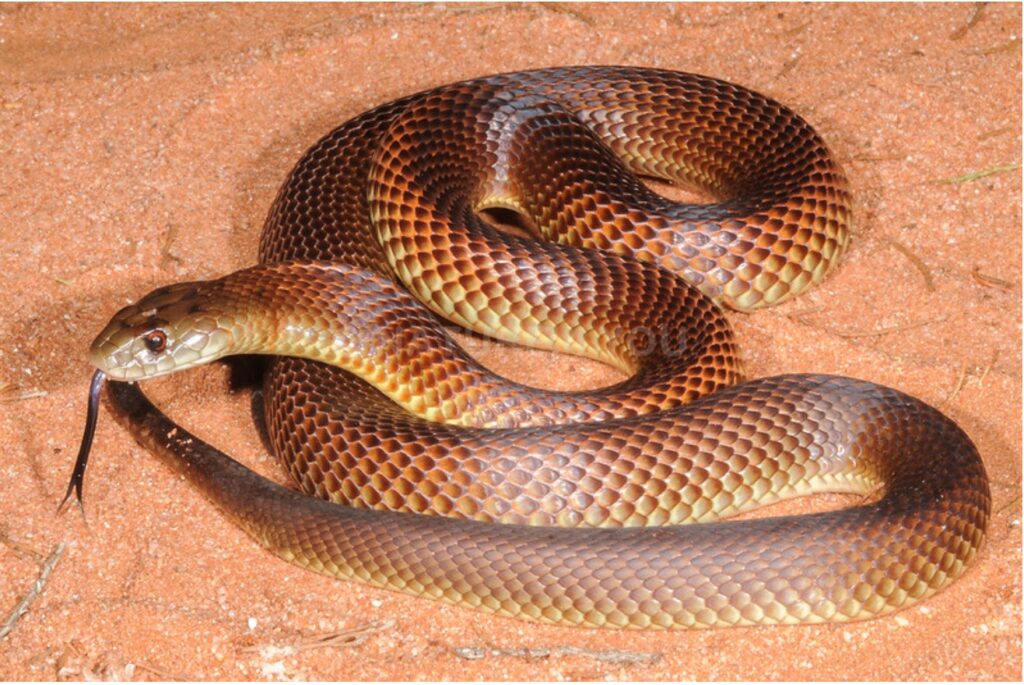
In my book “Fires, Farms and Forests” I refer to the European wasp and some of the control methods we tried on Surrey Hills. They are becoming more common in Tasmania and southern areas on the mainland. It is an aggressive insect that kills all the other insects around their nests. Unlike honeybees, they can continually sting you if you upset them. In one memorable incident, I was with the roading foreman and the dozer operator while a road was being built on a private property I was going to log. We usually marked out the road line with red flagging tape, and the dozer operator built the road following the tape line without our presence. However, there was a long section through thick tea-tree we couldn’t mark with tape. We decided to leave that area and guide the dozer operator through this section while he was building the road.
It was a cold and dreary north-west Tasmanian summer’s day. I remember wearing a long sleeve King Gee shirt, woollen bush jumper and survey jacket. The dozer operator must have disturbed a European wasp nest because suddenly we both had a swarm of angry wasps attacking us. The foreman rushed to the front of the dozer waving his arms to stop the dozer so he could get inside the cabin. I just bolted into the forest and ran as fast as I could away from the wasps. Remarkably I was stung through the three clothing layers. The foreman was stung on the head and went to hospital after suffering some migraines. It was terrifying, but thankfully, only a brief encounter with a very dangerous insect.
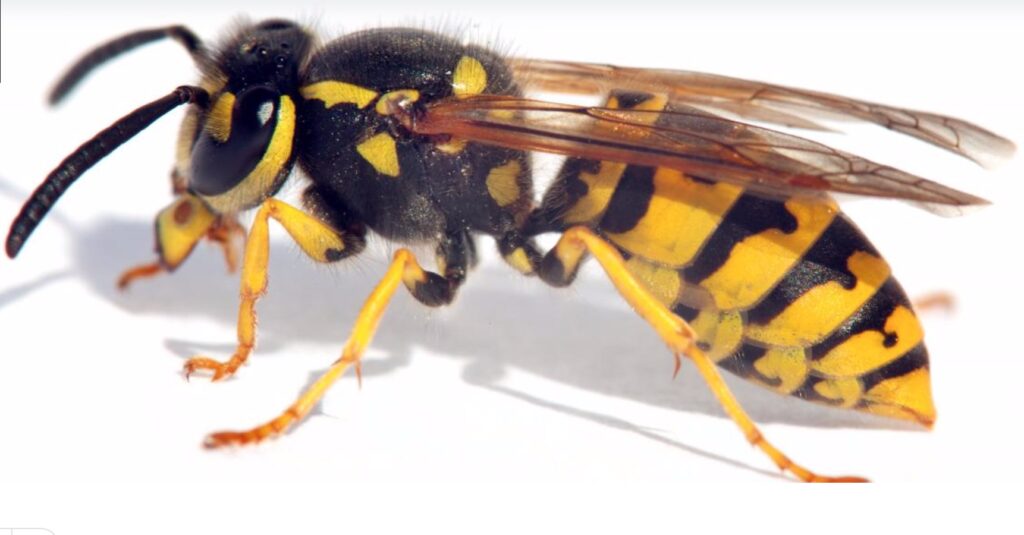
Any forester who has spent time in the field in Tasmania will have their tiger snake (Notechis scutatus) stories to share, especially during warmer periods when they are breeding and known to be more active and aggressive. Tasmania only has three snake species, including the tiger snake, one of the most venomous and aggressive snakes in Australia. They look fearsome with their jet-black colour and propensity to raise their heads ready to strike when aggressive..[5]
On Surrey Hills, there is an Aboriginal chert quarry near Parrawe. Every time I, and my manager at the time, visited the quarry, we saw one of the largest black tiger snakes we had ever seen. On one of our visits, my manager was in front of me as we walked near the quarry and he suddenly went from five feet six to over eight feet as he jumped in the air in fright after nearly stepping on the giant tiger snake.
After these encounters I believed it was a big black serpent protecting the spirits of the original inhabitants. One day, I told this story to an older gentleman. He was helping us locate historic sawmill sites in the Parrawe, Takone, Yolla, and Preolenna areas to update our heritage site register. He was sceptical but very interested in my story. He wanted to see the quarry and this snake. For some reason I think he thought I embellished the story a little.
As we walked to the quarry from the car, I suddenly gasped and stopped. Sitting coiled up, and practically lifeless (it was a cold, overcast early spring day) on the edge of the track was the large black tiger snake. The old gentleman thought it was a set up and said we had placed a rubber snake there to prove our point. From a distance, I began throwing stones to make it move. Frustratingly it wouldn’t and just lay there. The gentleman kept telling me to go and pick up the ‘plastic snake’. Finally, after throwing quite a few more stones, I hit it near its head, and it grumpily moved from its near-comatose position and started slinking away into the thick undergrowth. The older gentleman, turned back towards the car, shaking his head and mumbled that he now believed my story about the big black serpent.
For a long time, we tried to buy the timber on an isolated property near Moina, not far from Cradle Mountain National Park’s entrance, but on a lower elevation in the upper Forth River valley. It is one of the last basalt areas in the valley and consequently was cleared for grazing during the early twentieth century. By the end of that century, it was abandoned and the cleared areas became overgrown with bracken fern (Pteridium esculatum) and silver wattle (Acacia dealbata). There were large areas of remnant white-topped stringybark (Eucalyptus delegatensis), swamp gum (E. regnans) and white gum (E. viminalis) that remained and they were the focus of my interest during many visits to the property to assess its timber potential.
It always was a long day visiting the property as it took a good hour to walk from the car. One particular day, I was with the roading foreman marking in road locations with flagging tape. In the old cleared areas, silver wattle lasts for about 20 years and then dies and blows over. It was hard work walking through thick bracken hitting your shins against horizontal wattle logs you couldn’t see. At one point I had to step on a log to lift myself over another wattle log lying horizontally about two metres above the ground. I put my hands on top of the log and lifted myself. Barely one foot in front of me on top of the log was a coiled up tiger snake lying in the morning sun. It raised its head to meet mine, and greeted me with a forked tongue flicking in and out as we eyeballed each other. I don’t know who was more shocked but I yelped and fell back down to the ground, terror overwhelming me. I remember lying there shaking. It was relatively early in the day, and it took a lot of will power for me to continue marking road lines for the rest of the day!
These are some of my memorable and scary encounters with animals in the forest. Have you got any you would like to share?
[1] Jack jumpers are smaller bull ants, native to Australia and are really wingless wasps that developed a crawling lifestyle. Look closely at Australia’s bull ants and you will see their wasp-like body. Jack jumpers are carnivores and scavengers and have a fearsome reputation for their extreme aggression. They have remarkably long jaws (or mandibles). The retractable sting is located in their abdomen, attached to a single venom gland with six times the venom of a honeybee. The sting by one ant is relatively mild for a human, however it is one of the few ant species that can be dangerous to humans due to an anaphylactic reaction by about three percent of the population. When faced with multiple stings, as I was, the effect is much more dramatic.
[2] What I saw was most likely the giant golden orb spider (Nephila pilipes). The females are large at up to 4.5cm long with a leg span up to 15 cm long. The male is much smaller at only 5-6 mm long.
[3] This means it was about 3.7 metres long, the width of a D7 dozer blade used to build the track.
[4] This was in 1987 when electric windows were not a standard feature in cars – certainly not in forestry utes.
[5] Tiger snakes are found in the southern regions of the mainland as well as Tasmania. They are highly variable in colour from brown to grey olive. However, Tasmanian tiger snakes are more commonly jet-black or black with lighter crossbands or sometimes grey with black flecks. Tasmanian tiger snakes are considered to be quiet snakes mainly due to the lower temperature ranges they inhabit. Admittedly most of my tiger snake encounters were during cooler months or days and the snake is very doey and poses no threat.
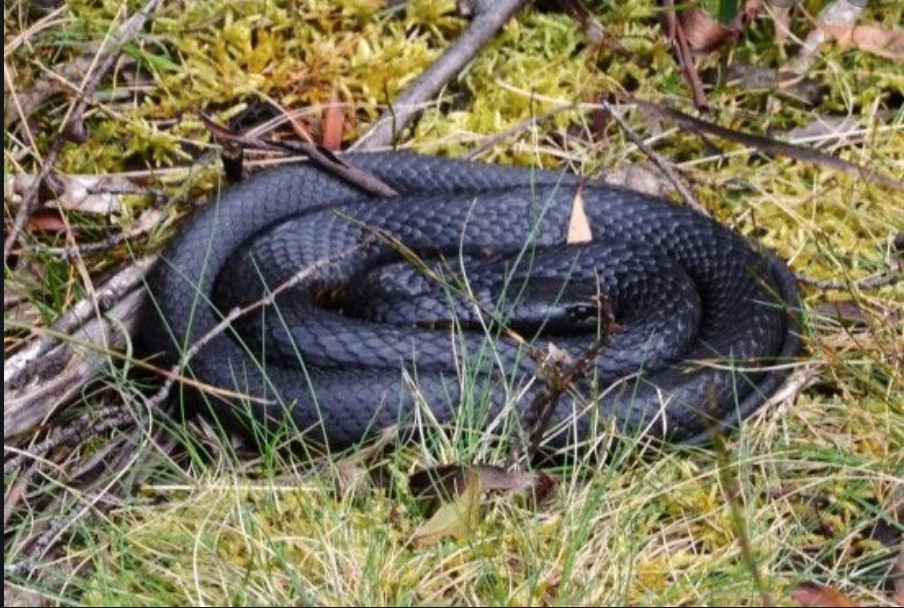
Good read thanks Robert.
Each paragraph caused a laugh and a shiver due to similar experiences – a good read
Having spent 40 odd years as a forester I have encountered surprisingly few snakes in the bush, though, as you say, when you see one early in the day it becomes hard to concentrate on the job in hand for the next few hours.
The most interesting encounter I have had was a few years ago when I was trying out my newly acquired drone at Foresters Wood. I set it down, turned away to do something and when I turned back there was a moderately sized tiger snake neatly laid out across the legs of the drone.
Completely unperturbed when I started the motors, I decided to take him for a ride. He hung on gallantly up to about 2m, finally dangling with his chin over one leg of the drone, until he fell to the ground and rapidly disappeared. There was considerable satisfaction in being able to scare him more than he had scared me.
Thanks for sharing Jack, a great tale.
Another interesting read Robert.